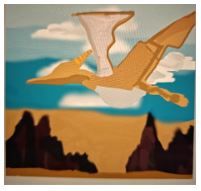Habitat Destruction: Loss, Death, Loneliness

Our world is in great danger because the climate is starting to change constantly. The greenhouse emission is causing the earth to warm up. Due to this, ice and glaciers are melting. Polar bears and seals tend to lose their homes. It is not only this that is destroyed. Many forests are catching bushfires, leaving animals with fewer survival percentages.
Animals’ loss, global warming, extinction. A time-lapse to 800 million years ago (Smithsonian, n.d.) when animals were born into existence. The first animal evolved from colonial protists millions of years ago. Far in the ages of dinosaurs, you drifted into your history textbook.
Surrounded by a desert full of cacti and a little pond of water. No phones or houses were built, just hard caves covered with cacti. You look around the island and realize how beautiful it is. Not a speck of plastic or a drop of tissue. All green animals were happily crunching and munching on the thin, slice grass. Rhinoceros were there, as so many other species. You see plain yellow sand, and your outfit has changed into a cape of far and a stick on your hand. Starving like a bear slithering like a snake, your first attempt was to find food. Going near the river to look for food and accidentally tripping over a rock, you land face-first into the water. Am I drowning? No, I am sitting on a pterodactyl: flapping, bird-like dinosaur that drops into a middle of a cliff. On the head of the pterodactyl, a purple bottle was placed. Picking it up and drinking, your eyes shut with tiredness.
You time-travelled to now and all pollution and smoke. Harmful gases and people dying. Rhinoceros were almost extinct—so many buildings and so few animals that only a few were protected and rescued from humans. You can hardly find a green fresh environment.
A little glimpse at the Earth brought such terror. Then again whisked into a swirling blue. Everywhere you saw grey and black. Animals were dead. Gloomy people. Fewer trees. All animals were extinct. Only a few were saved. Humans were left all heartbroken without animals. Pets were dead. Zoos were closed. Hart stung worse than a bee’s sting.
Even scientists are still determining if most animals will survive in the near future. And it is all because of me and you. Due to the throwing of plastic into the ocean, a variety of fish is dying. And using body sprays causes the ozone layer to thin, leading to a warmer atmosphere. This is causing less survival rate for polar bears and seals. As well as that, many bushfires are caused because bushes are getting dry and humid. This causes wild animals to lose their homes and trees to die.
Habitat destruction is one of the major threats on Earth. But scientists say we can reduce the percentage by reducing the use of chemicals and protecting our environment. If we work together, nothing is impossible.
References
National Geographic. (1996-2023). From National Geographic Environment: Habitats: https://education.nationalgeographic.org/resource/habitat/
Smithsonian. (n.d.). National Museum of Natural History. From Smithsonian National Musem of Natural History: https://naturalhistory.si.edu/education/teaching-resources/life-science/early-life-earth-animal-origins
Author Biography
Azka Ibrahim is a 13 year old girl studying in Grade 7. She lives in the capital city of Maldives, Male, with her family. She began her journey at Ugail Foundation in 2021, joining the Coding and Critical Thinking program. And last year finished the Advance Coding program. In 2o23, she joined the Leaders for Tomorrow program. Her favourite hobbies are reading books, writing stories and poems. And painting scenery with different mediums of colours. Also, she loves making crafts for different occasions and give to family members and friends.
Cite this article as:
Azka Ibrahim, Habitat Destruction: Loss, Death, Loneliness, theCircle Composition, Volume 4, (2023). Habitat Destruction: Loss, Death, Loneliness - theCircle Composition
